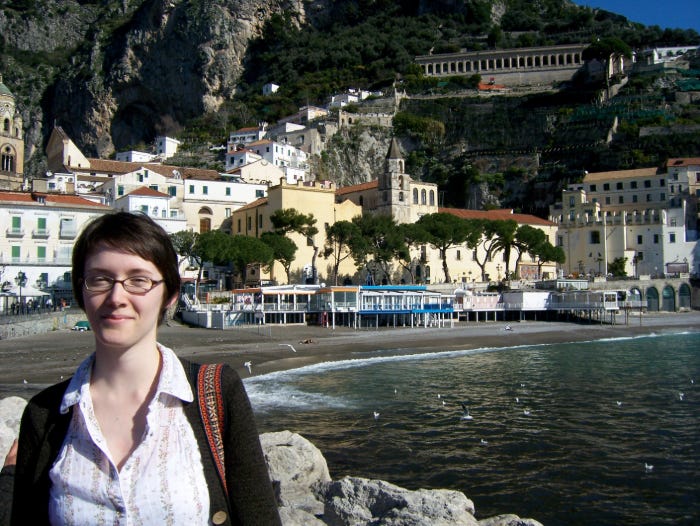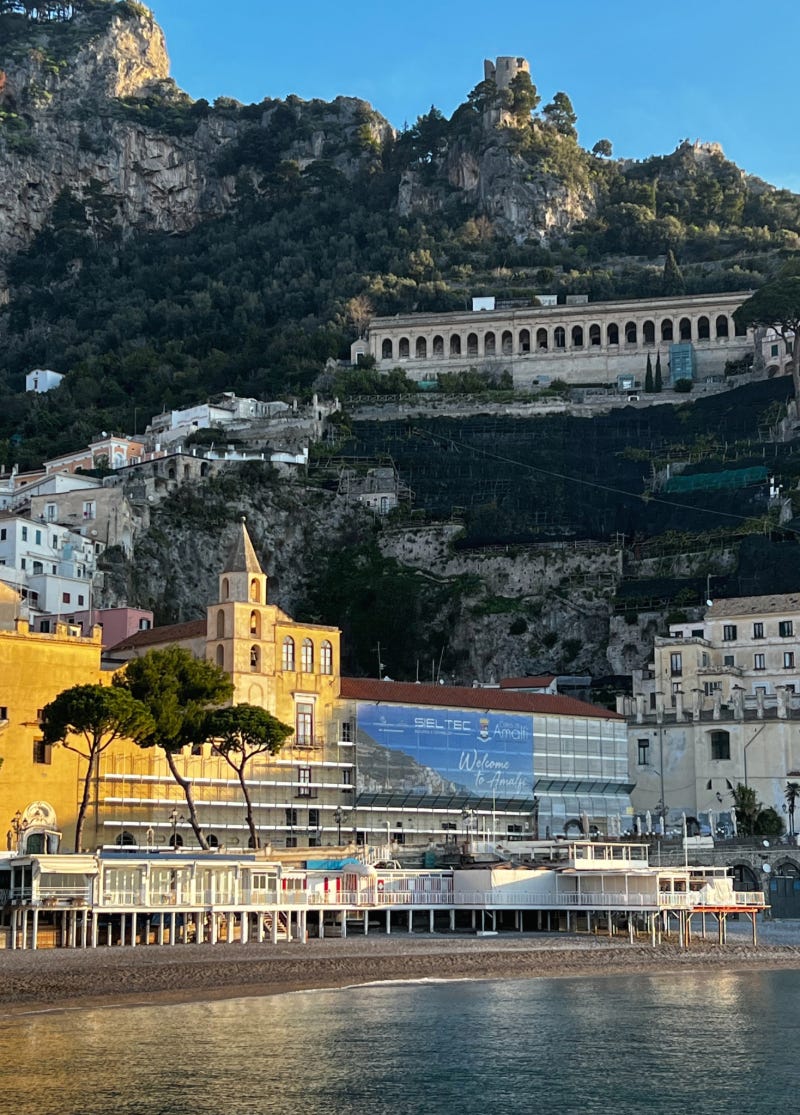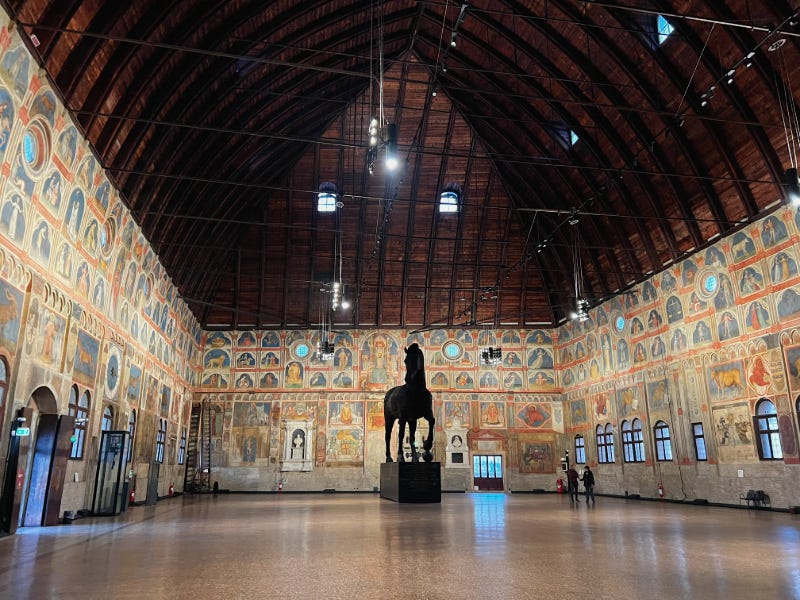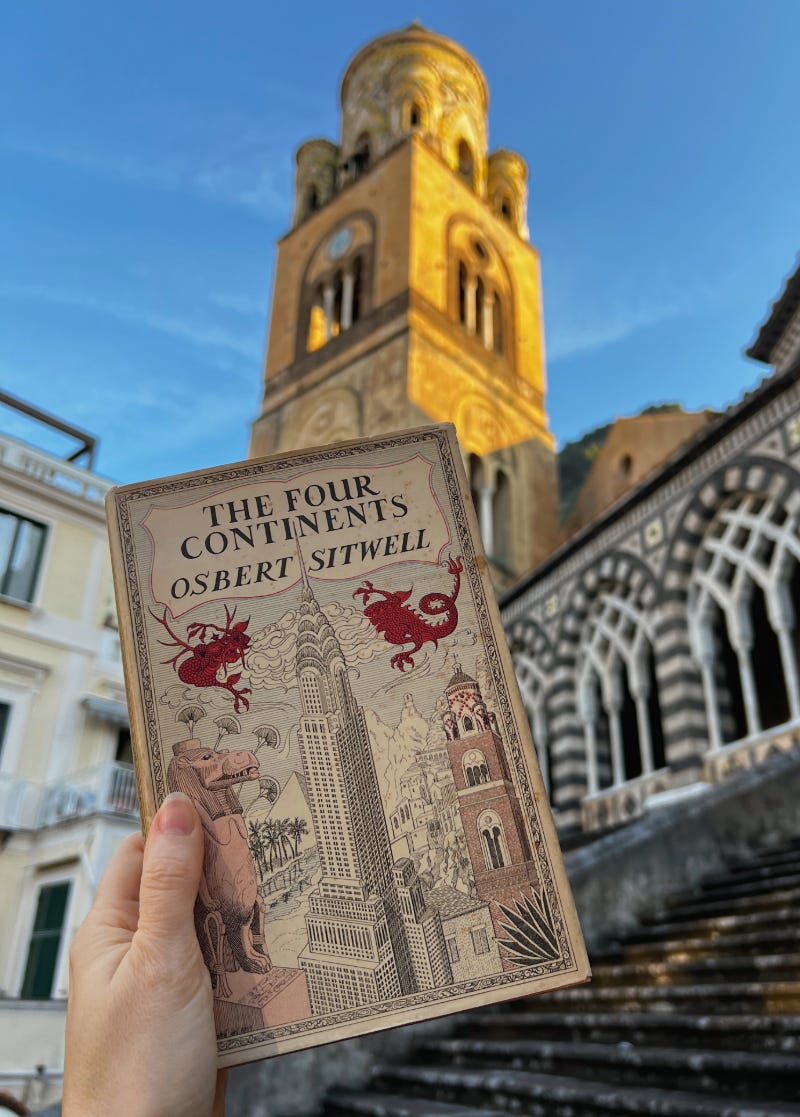—The first photo I ever took of Amalfi, February 2007.
Destagionalizzazione—meaning “deseasonalization”—is a word that’s about as hard to pronounce in Italian as it is to figure out when it comes to tourism. Yet, in so many ways, it’s a much more useful word than the admittedly much easier to pronounce word overtourism. While the number of visitors each summer on the Amalfi Coast has been a growing problem, it wasn’t until last year that the topic of overtourism in the area really made the news.
Overtourism is, indeed, an important conversation. Yet, if I can tell you one thing about it from many extended conversations on the topic, it isn’t a particularly easy idea to unpack. But the seasons? Now, as a good Midwesterner, that’s something I can talk about.
The first time I visited the Amalfi Coast was at the end of February in 2007. Exactly 18 years ago today, as it turns out. Even by today’s standards, that was decidedly out of season on the Amalfi Coast. Easter is the official start of the season, and in 2007 it wasn’t until April 8th. Over the years, I’ve often wondered if I would have had the same sort of immediate, visceral reaction to Amalfi had I arrived on a hot summer day with the beach packed and crowded streets. While there’s no way to answer a question like that, what I do know is that falling for the off season on the Amalfi Coast is how it all began for me here.
Over the years, watching the seasons come and go—from the first wisteria blooms in the spring to the return of the swifts, the holidays and festivals, the quiet winters, and yes even those sticky summer days—is one of my favorite parts about life on the Amalfi Coast. If you enjoy my morning walk photos on Instagram, you’ll know how much I love it here throughout the year. It’s a remarkable place in any season, which is precisely why the ideal of destagionalizzazione feels, well, natural to me.
—My first photo in Amalfi, February 2007.
Nearly 20 years ago, when I first came here, it still made sense to talk about the “shoulder seasons”—March/ April or May and September/ October—that were on either side of the peak season from June through August. Over the years, those shoulder seasons have all but disappeared. This is, in many ways, great news. It means more travelers are coming here earlier in the spring and later into the autumn. Even better, this winter is the second year that Travelmar has operated ferries along the coastline throughout the winter. Sure, service is more limited, but it’s another important step forward for making the Amalfi Coast more accessible in every season.
That being said, February is still one of the quietest months of the year here. While many hotels, restaurants, and shops are closed from November until Easter, this is the time of year when signs of the spring start to show up. Everywhere you go there’s work being done – repainting, updating, and getting ready for the season. It’s the season when everything is about to begin.
-Even the comune (town hall) is freshening up in Amalfi these days.
OUT OF SEASON IN LONDON
Given the seasonal nature of life on the Amalfi, I tend to do most of my traveling during the winter months. That works as well because I enjoy traveling to cities in the colder and quieter seasons, especially places like London, where there the many museums, galleries, and theaters offer plenty of places to hide out from colder weather. I go to refill the creative well and enjoy the things I miss here on the Amalfi Coast.
Lately, I’ve had the seasons even more on my mind because of book called Out of Season by Spike Hughes, which found its way into my life on my trip to London last November. One evening I went to see the remarkably talented Julian Lage at Cadogan Hall in Chelsea. During the show, he played a beautiful version of the song Nocturne. He filmed it live in Manchester on the same tour, so you can enjoy it here:
After playing the song, he mentioned how it was written by Spike Hughes (1908-1987), a jazz musician and, notably, one of Britain's earliest jazz composers. Perhaps Lage only mentioned that fact in London as Hughes was born and lived much of his life there, but it was music to my ears – more than just a very lovely version of a lovely song.
Little know (and largely useless) personal fact: the first job I ever wanted was to be a jazz historian. Before I went to bed that night, I had already read everything I could about Spike Hughes online (very very little) and was curious to find out more about this composer, jazz musician, and, later in his life, writer.
(Have a listen to the Spike Hughes version of Nocturne with Coleman Hawkins, too.)
I had seen that Hughes had written a book called Out of Season in 1955 that was a travelogue about a winter trip he took by train from London to Sicily while researching a book about opera houses. I was able to track down a copy, and as I went on with my winter trip from London to Scotland, it made me happy to think that book was on its way to Amalfi.
I took the book with me on an out of season visit to Florence in January (side note: one of the best months of the year to visit!) and enjoyed reading about Hughes’s train trip across Europe while myself speeding across the Italian countryside on a decidedly more comfortable train than he experienced in 1955. I enjoy reading travelogues, but in recent years have spent much more time with 19th-century travelers in Italy. Out of Season was the first time I found myself traveling through a post-WWII Italy with a writer. It was an Italy that’s recognizably modern, yet still very much marked by the war.
Hughes set off across Europe with his wife, Charmain, and Seven Pieces of Luggage, which over the course of the book took on a mystical enough meaning to warrant capital letters. Whether stuffed in sleeper train cars still designed for Edwardian travelers—whose registered trunks traveled in another part of the train—to disappearing porters at the Messina train station, the experience of traveling from one place to another was as much as the experiences as each place they stopped.
—Spike Hughes from Out of Season.
Their itinerary took them from Venice to Milan, Parma, Florence and down south to Naples, Palerno, Catania, and back up to Genoa and Turin. Along the way, he writes about their current experiences along with earlier memories, since Hughes was a lifelong Italophile, even living in Sicily for over a year when he was 5 years old. It’s a journey through Italy with someone who loves it, quirks and all. (Favorite musical moment was in Naples: “…still less was I prepared to be entertained by a violin-and-guitar version of Smoke Gets in Your Eyes, in which the harmonies persisted in by the guitarist were quite grotesquely unrelated to anything the late Mr. Jerome Kern may have thought he had bequeathed to posterity.”) But, overall, it was his way of traveling that really struck me:
“In the course of a journey of some 4,000 miles Charmain and I found many things to delight us, not the least important of them being an atmosphere of leisure and an opportunity to stand and stare which, however much one insists that a summer holiday is spent doing nothing, is something which in reality can be achieved only out of season.”
I thought back to that line and the luxury of simply standing and staring earlier this month while in Padova. (Add that to your must-see places in Italy!) Practically alone in the middle of the Palazzo della Ragione—the largest covered room in Europe—I felt the incredible size of the space even more so because of its emptiness. And earlier that morning, it was just our little group of 4 people inside the Cathedral Baptistery standing and staring up at the 14th-century frescoes by Giusto de' Menabuoi. Both were reminders of what the word “stupendous” really means and both were even more remarkable because we had the time and space to take it all in.
—Surrounded by stupendous at the Palazzo della Ragione in Padova.
It’s encouraging to me on some level that Hughes had that same experience traveling through Italy in 1955. His book made me stop and think about how traveling out of season isn’t just about weather or time of the year, it’s about the type of experience you’re looking for in Italy.
“In the end, the difference between visiting Italy in the summer and visiting Italy in the winter was the difference between staying a week-end there and living en famille, between being fussed over and spoiled as a guests and being allowed to live one’s own life without having to distinguish one day from another.
And that, I believe, is the greatest luxury any form of travel can offer.”
While there are a great many ways to travel (I for one wouldn’t make it far with Seven Pieces of Luggage), my idea of luxury is exactly that idea of living in a place. It’s less about where I stay than the experience of having time to be in a place. Like Hughes, I find that easier on many levels during the winter months. Mostly because I am decidedly not a summer person.
Even though he was writing 70 years ago (when one of those Seven Pieces of Luggage was a portable typewriter), Hughes’s message is still remarkably pertinent:
The summer traveller, indeed, probably gives little thought during the winter to the resorts and haunts he knows so well during “the season”; or if he does think of them it is unlikely that he sees them in his imagination except as he knows them best—bathed in unceasing sunshine, the thermometer (and the prices) rising to heights unknown in his native country. It probably does not occur to him that not only do the inhabitants of his favourite seaside town continue to lead a normal, busy life during the winter months, but that those same inhabitants have something to offer to the winter visitor which is denied to the summer tourist.”
Back to the seasons on the Amalfi Coast, this is one of the little joys I have in sharing about all of the seasons of the year on the Amalfi Coast. If you’re looking for spritzes and hot summer sun days at the beach, then by all means come here in July. But, if you’re open to other experiences, there’s so much more. After all, it’s all that more that first captured my heart 18 years ago.
MORE OUT OF SEASON READS
Rather unintentionally, I seem to have fallen into an “out of season” theme in my reading lately. In a footnote in Out of Season, Hughes mentioned an earlier winter themed travelogue about Italy called Winters of Content published in 1932 by Osbert Sitwell (younger brother of the better-known Edith Sitwell). Sitwell had spent a great deal of time in Italy and Amalfi in—yep you guessed it—the winter. His later book, The Four Continents, even featured the bell tower of Amalfi’s cathedral on the cover.
—The campanile of the Duomo on the cover of Sitwell’s book.
I’ve yet to delve into Sitwell’s books though, because I’ve been slowly making my way through Watermark by Joseph Brodsky. I brought it along with me on that trip to Padova since we were contemplating a day trip over to Venice. Brodsky spent 17 years visiting Venice, primarily in the winter, before writing this book. It’s a slim one, and an interesting read – hard to fix much like the nighttime reflections of a city that already has a haunting sort of beauty. (But, not being a summer person, I chuckled when I read Brodsky’s comment, “Anyhow, I would never come here in summer, not even at gunpoint. I take heat very poorly…”)
While I didn’t make it to Venice on that trip, I couldn’t imagine reading Brodsky’s book, and the black-and-white essence of the city he loved (and how he tied it into the “equally monochrome medium of my métier”), in any other season of the year.
—Winter trees and Watermark on the train to Padova.
All of this reflecting on off season travel has made me think even more about how much travel has shifted on the Amalfi Coast over the past century. While the idea of destagionalizzazione that I started with may seem an unrealistic way to make any significant impact on overtourism, it helps to remember that it hasn’t always been the way it is now. The way we travel and, especially, when we travel are by no means fixed. Would you be surprised to find out that in the 19th-century, peak tourist season on the Amalfi Coast was from the winter to spring? The idea of coming to the Amalfi Coast in August would have been about as appealing to a 19th-century traveler as Venice in the summer was for Brodsky.
The shifting of the tourist season is a fascinating topic, but one for another day as I’ve already gone on too long. I’d better send this newsletter before spring arrives and is gone …
KEEP READING
Great news! Did you see that Frances Mayes started a Substack? It’s called Proceed to the Route and is a wonderful way to keep up with all her travels. If you are thinking of where to travel this year, you’ll enjoy her latest newsletter:
If you love Venice, don’t miss the recent article “Venice in Winter, With a Poet as Our Guide” (free link) about Brodsky in Venice. Gorgeous B&W photographs by Italian photographer Matteo de Mayda too!














I find off season travel to be far more rewarding and insightful.
Lovely! Good to meet another out of season traveller